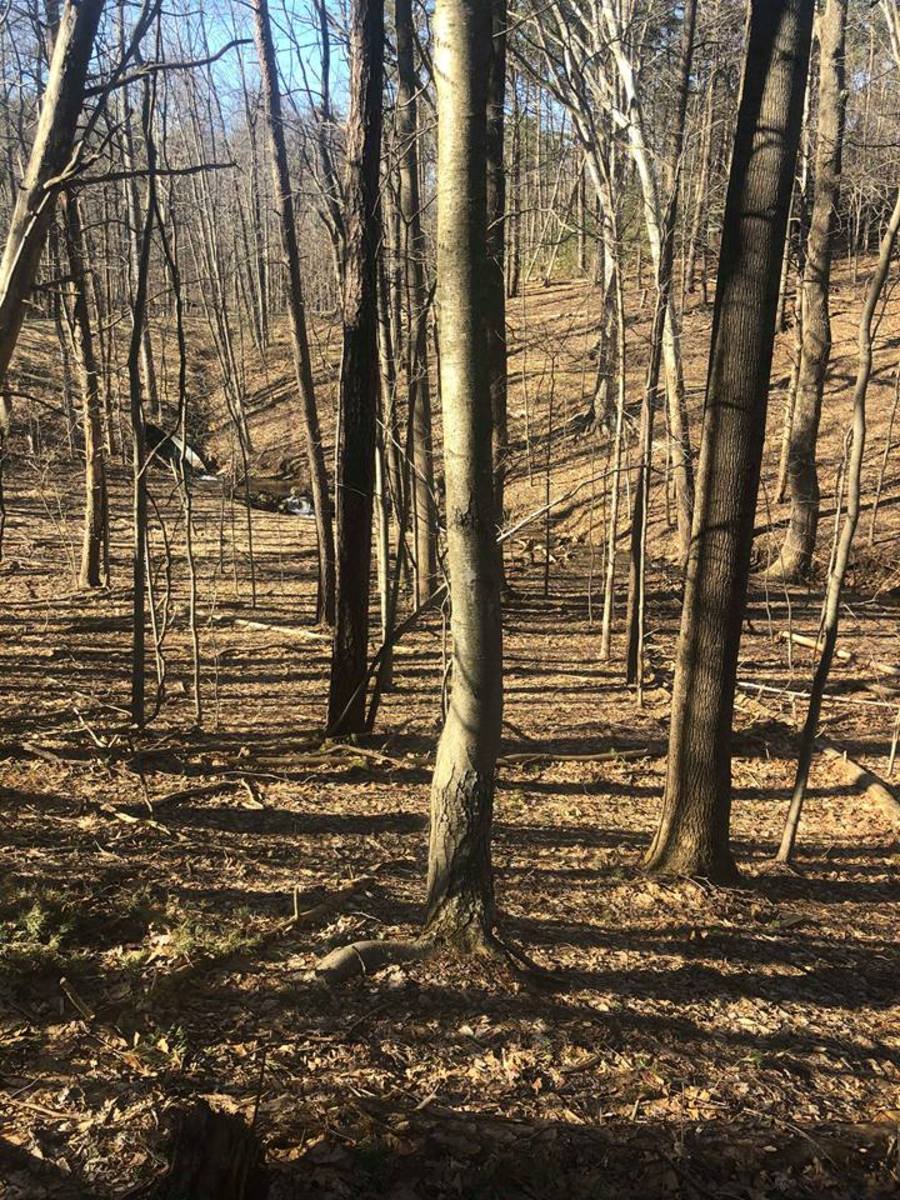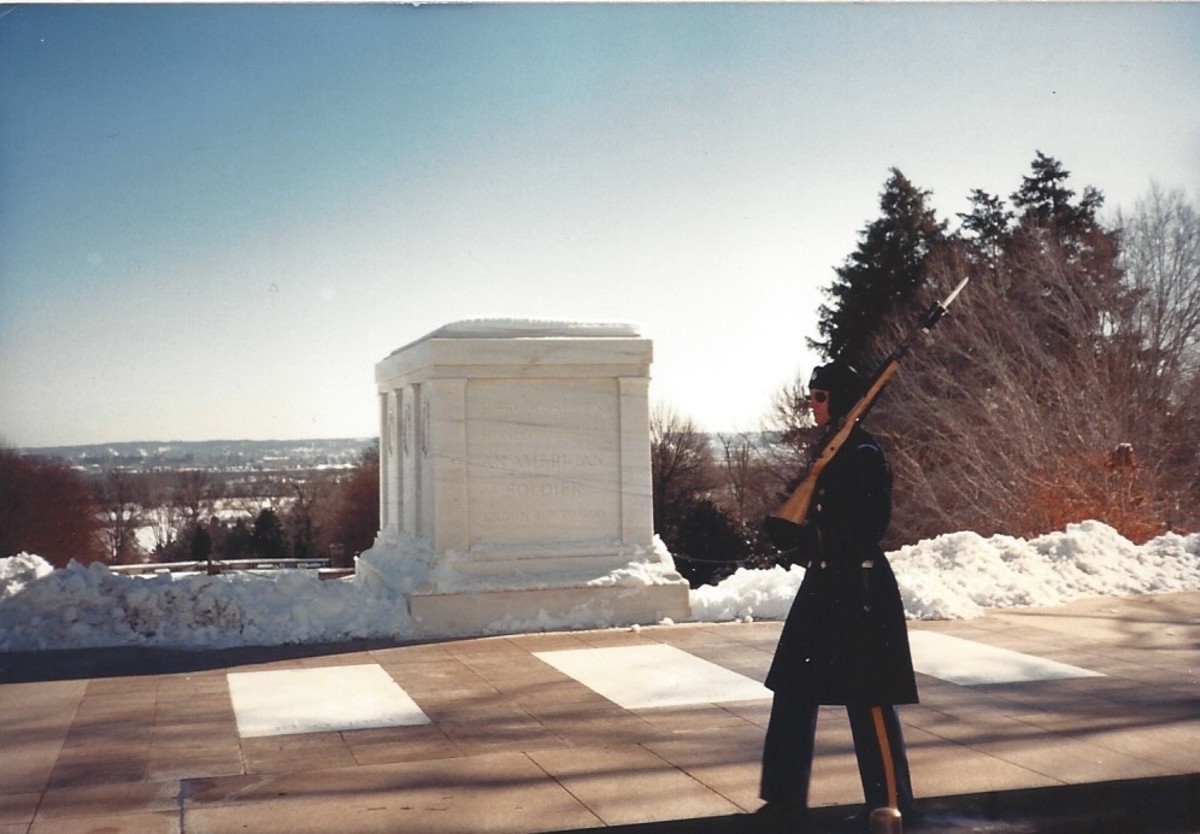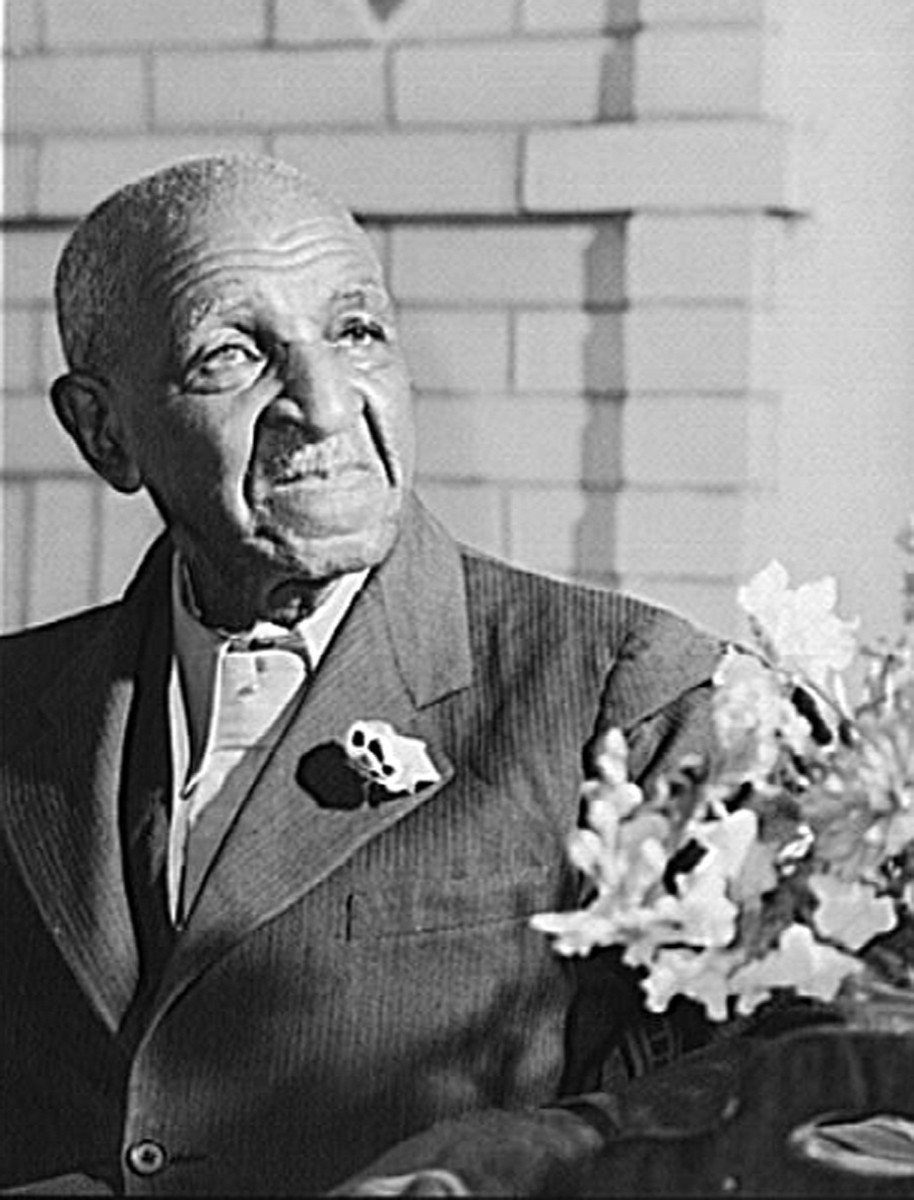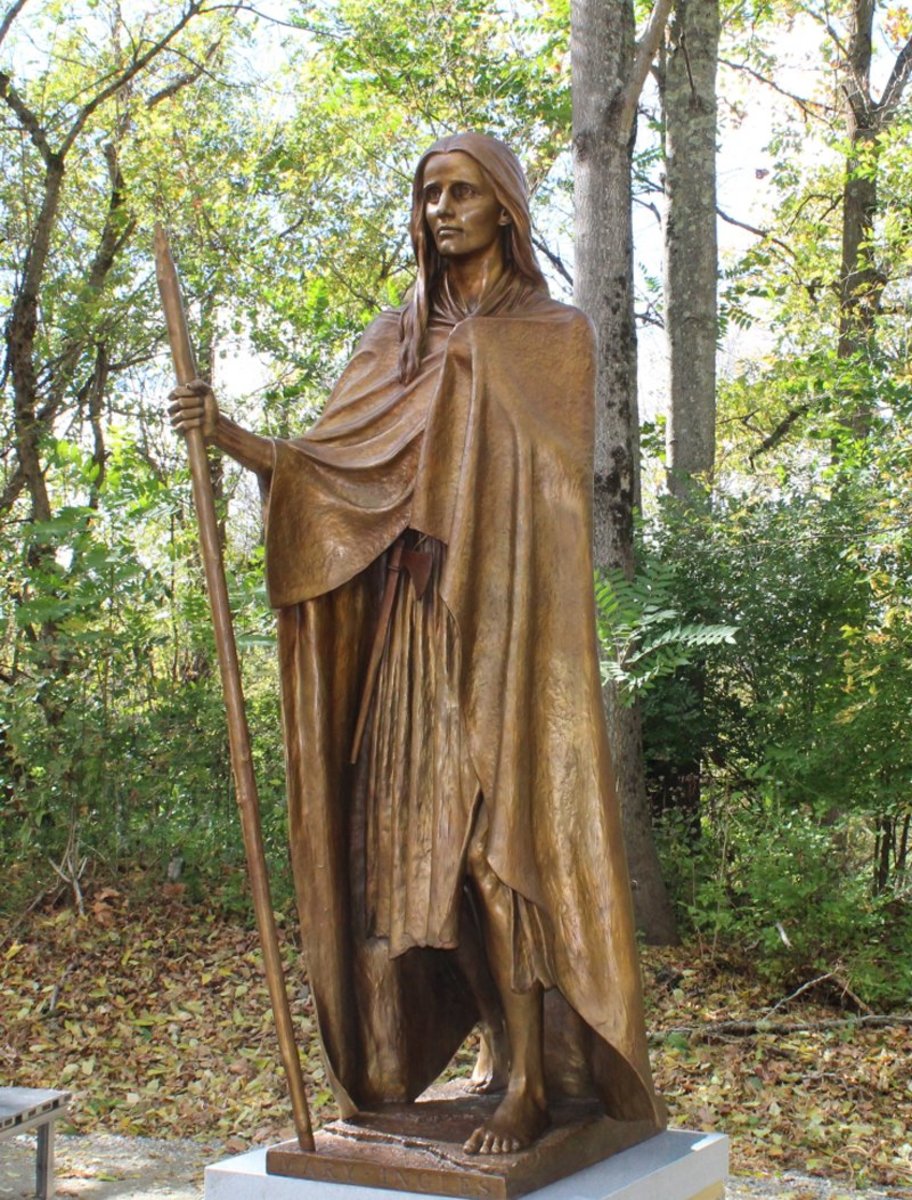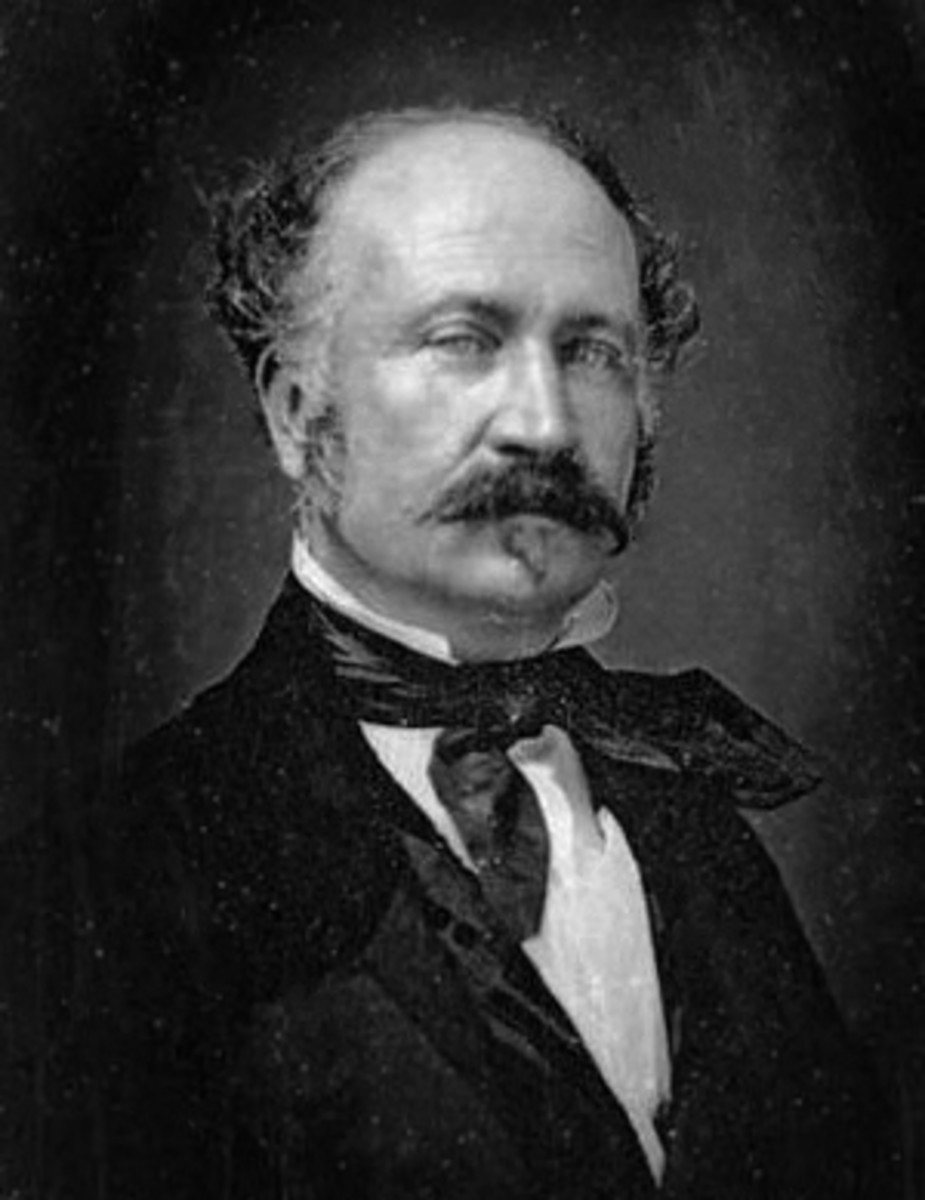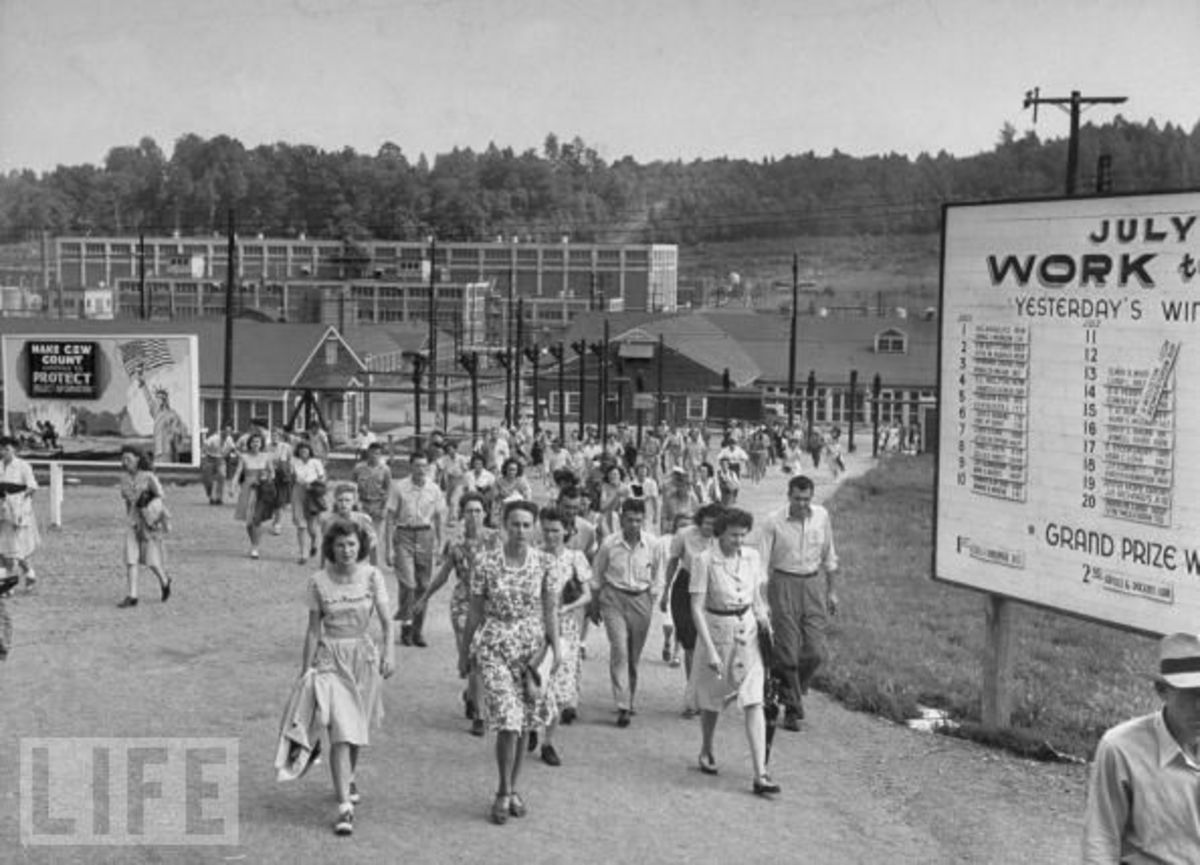- HubPages»
- Education and Science»
- History & Archaeology»
- History of the Americas
The Roots of Arlington Cemetery
Arlington Cemetery
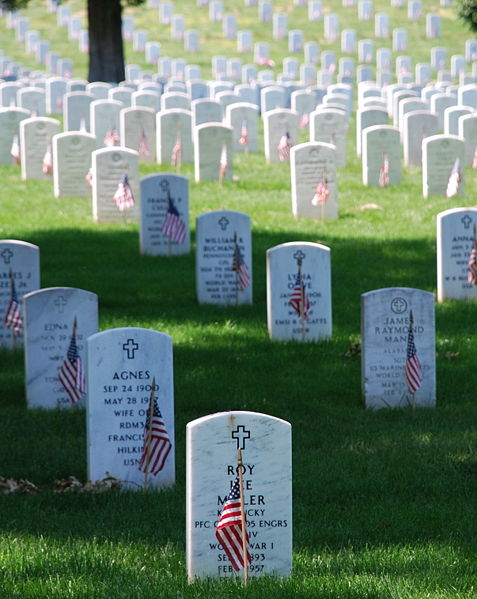
Arlington Background
Arlington National Cemetery is a well-known military cemetery location in Arlington County, Virginia, but the roots of Arlington National Cemetery are not as well known. Arlington National Cemetery was established during the American Civil War on the grounds of Arlington House directly across the Potomac River from Lincoln Memorial in Washington, D.C. Across 624 acres, veterans and military casualties from each of the nation’s wars, from the American Civil war through the military actions in Afghanistan and Iraq, are interred in the cemetery. Pre-Civil War casualties were re-interred after 1900.
Arlington National Cemetery is home to the Tomb of the Unknowns, which is part of the Arlington Memorial Amphitheater, and the USMC War Memorial. You can also find the Netherland Carillon, John F. Kennedy Eternal Flame, USS Maine Memorial, Space Shuttle Challenger Memorial, and Nurses Memorial. A recent addition is the Victims of Terrorist Attack on the Pentagon Memorial. Many notable US Presidents and other select individuals are buried at Arlington.
Arlington’s Roots
The roots of Arlington stretch farther back into history then just the American Civil War beginning with the 1st President of the United States, George Washington. Martha Dandridge Custis (Washington), at age 18, married Daniel Parke Custis, age 38, a wealthy planter in 1750 were they lived at the White House Plantation in New Kent County, VA. Together, they had 4 children: Daniel, Frances, John, and Martha.
Martha Custis would face three deaths before George Washington would enter her life romantically, although it is seems likely that George Washington knew Daniel and Martha Custis for some time. A year after her marriage, Daniel was born and two years later, Frances was born. Daniel would pass away the same year John was born in 1754. Martha joined the family in 1756, but the following year wouldn’t be as joyful. Martha Custis would lose a daughter, Frances, and her husband Daniel. The death of her husband left Martha a rich widow with independent control over a dower inheritance for her lifetime and trustee control over the inheritance of her minor children.
Two year after Daniel passed away; George and Martha were married and moved to Mount Vernon. While George and Martha didn’t have children of their own, they both raised Martha two surviving children, John Parke Custis and Martha (Pasty) Custis. Pasty, at 17, passed away during an epileptic seizure in 1773. For us, our story continues with John Parke Custis.
John married Eleanor Calvert in February of 1774 and moved to the White House Plantation. Over two years later, John purchased the Abingdon Plantation in Fairfax County, Virginia, which is now in Arlington County, Virginia, and the couple settled there during the winter of 1778-1779. At this same time, John brought another property, which after his death would become Arlington Plantation. John and Eleanor had seven children, but only four lived to maturity: Elizabeth Parke Custis, Martha Parke Custis, Eleanor (Nelly) Parke Custis, and George Washington Parke Custis.
John Custis serves as an aid to George Washington during the siege of Yorktown were he contracted “camp fever” and shortly after the surrender of Cornwallis, John died in 1781. After his death, Eleanor left the two youngest children, Nelly and George to be raised by George and Martha Washington at Mount Vernon. Eleanor, who stayed at Abingdon, went on to marry Dr. David Stuart and have 16 more children. From here, our story continues with young George Washington Parke Custis.
George Washington Parke Custis began his life with George and Martha at a very young age since he was only 6 months old when his father passed away. At age 8, he moved with George, Martha, and his sister to New York to occupy the first Presidential Madison. George made an attempt at college, but was “stubborn” in learning and never finished. At this time, Washington sent him back to his mother with frustration at the situation. In 1802, he inherited large amounts of money and property from his father (John Custis) and grandfather (Daniel Custis). Immediately, he began the construction of Arlington House.
Arlington House Pre-1861
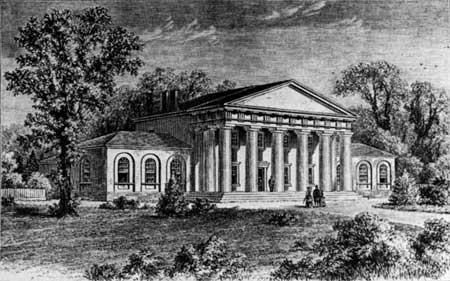
Arlington House
George Washington Parke Custis hired George Hadfield, who came in 1785 to help construct the U.S. Capitol, to design Arlington House. Custis wanted Arlington House to be a living memorial to George Washington and it took him 16 years to complete it. The north wing was completed in 1802 and the south wing in 1804, but the central section wasn’t done until 1818. When it was completed, the house stretched 140 feet from the north wing to the south wing.
In 1804, Custis married Mary Lee Fitzhugh. The two lived at Arlington house from 1804 until they passed away and were buried together on the property after their deaths. George and Mary Custis had four children, but only one survived: Mary Anna Randolph Custis born in 1808. On June 30, 1831, Mary Anna married a childhood friend and distant cousin, Robert E. Lee. Together they had seven children, three boys and four girls. All but one child, Annie, would survive Robert E. Lee.
Robert Edward Lee is best known for commanding the Confederate Army of Northern Virginia and the commanding general of the Confederate Army. Lee was a top graduate of West Point and was distinguished as an exceptional officer and combat engineer in the in the U.S. Army for 32 years before resigning to join the Confederate cause, even though he was opposed to slavery.
Just as his wife, Lee’s family roots stretch back far. He is the great-great-great grandson of William Randolph, who played an important role in the history and government of the Commonwealth of Virginia, and the great-great grandson of Richard Bland. Lee was also the great-great-great grandson of Richard Lee I. Richard Lee’s notable descendants include signers of the Declaration of Independence, Francis Lightfoot Lee and Richard Henry Lee, Revolutionary war general and Governor of Virginia, Henry “Light Horse Harry” Lee, Confederate Civil War generals Richard Taylor, William Henry Fitzhugh Lee, Richard L.T. Beale, Richard Lucian Page, and President of the U.S, Zachary Taylor.
It is the oldest son of Robert and Mary Lee, George Washington Custis Lee, who the story will continue with after the civil war.
Recommended Books
Arlington and the Civil War
Mary Anna was given the right to inhabit and control Arlington Plantation for the rest of her life, where upon her death; the full title would pass to her eldest son, George Washington Custis Lee. Robert E. Lee never owned Arlington estate, but only served as custodian of the property. Until 1861, Robert and Mary lived at Arlington, when Virginia ratified an alliance with the Confederacy and seceded from the Union. Mary was able to get most of the families’ valuables off the property because of an advance notice of the impending Union occupation from her cousin, Orton W. Williams. Under Brig. Gen. Irvin McDowell, federal troops took positions around Arlington and erected several locations around the estate including Fort Whipple (now Fort Myer) and Fort McPherson (now Section 11). Arlington House became the headquarters of the Union’s Army of Northeastern Virginia. Robert never returned to the property again and Mary only returned once before her death in 1873.
The federal government confiscated Arlington when property taxes levied against were not paid in person by Mary Lee. There was a public sale on January 11, 1864 and was purchased by a tax commissioner for “government use, for war, military, charitable and education purposes.”
Brig. Gen. Montgomery C. Meigs, who commanded the garrison at Arlington House, appropriated the ground in June 1864 for use as a military cemetery and Arlington National Cemetery was born. Meigs intention was to make the house uninhabitable if Lee would ever return. A stone and masonry burial vault in the rose garden, which was 20 feet wide and 10 feet deep, and contained the remains of 1800 Bull Run casualties was among the first monuments to Union created under Meigs. Meigs, with his wife, father, and son, was buried within 100 yards of the house as a part of his final orders. The federal government also dedicated a model community for freed slaves, called the Freedman’s Village, were more than 1,100 freed slaves were given land by the government to farm during and after the civil war.
After Lee’s death in 1870, George Washington Custis Lee brought an action in the Circuit Court of Alexandria, known as Arlington today, County. He claimed the land was illegally confiscated and, according to his grandfather’s will, he was the legal owner. In December 1882, the U.S Supreme Court, in a 5-4 decision, returned the property to Custis Lee. They state it was confiscated without due process. The following year, Congress purchased the property for $150,000. It became a military reservation and the Freedman’s Village ceased to exist (a story for another day). Arlington House, formerly named the Custis Lee Mansion, is known as The Robert E. Lee Memorial. And that is the roots of Arlington Cemetery.



